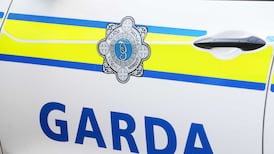The eagle has landed, or rather, he has landed again in Killarney where the last of the golden eagles was shot in the 1870s by landlords, gamekeepers and Victorian hunting parties.
The arrival of Breeze, a golden eagle with a wingspan of more than two metres, at the Coolwood Wildlife Sanctuary outside Killarney, represents the first part in a project to reintroduce the native eagle to the craggy wilds.
"In the 19th century anything with a hooked beak was an enemy," the owner of the sanctuary, Mr Sean Buckley, said. "The eagle has suffered from a lot of poor publicity. We want to show people the beauty of the bird and maybe put an end to the idea that eagles go around stealing babies from prams." The four-year-old eagle was brought from Scotland on Christmas Eve and will remain in semi-captivity in the sanctuary.
The project has cost £10,000 and has the backing of Coolwood, the Killarney Rotary Club, Mr Maurice O'Donoghue, of the Gleneagle Hotel, and Mr Martin Hoban, manager of McDonalds restaurant, Killarney.
Numerous place names, including the Eagle's Nest Mountain in Killarney National Park, testify to how plentiful the "king of birds" once was.
Robbing eagles' nests and selling the young into captivity was a favourite Victorian pastime in Killarney in the last century and this, together with hunting, led to the demise of the bird.
One businessman in Killarney in 1824 claimed the scars he bore on his face were the result of an attack by an eagle when he was an infant.
"The easiest part of the project will be releasing the eagles. The biggest hill to climb is to educate the public on the eagle.
"This is why we brought one in first to show people," Mr Buckley said.
Mr Tom Cooper, of Killarney Rotary Club, said: "We see this as a long-term project. We are compiling a proper history of the eagle in Killarney from numerous accounts by travellers in the 18th and 19th centuries."







